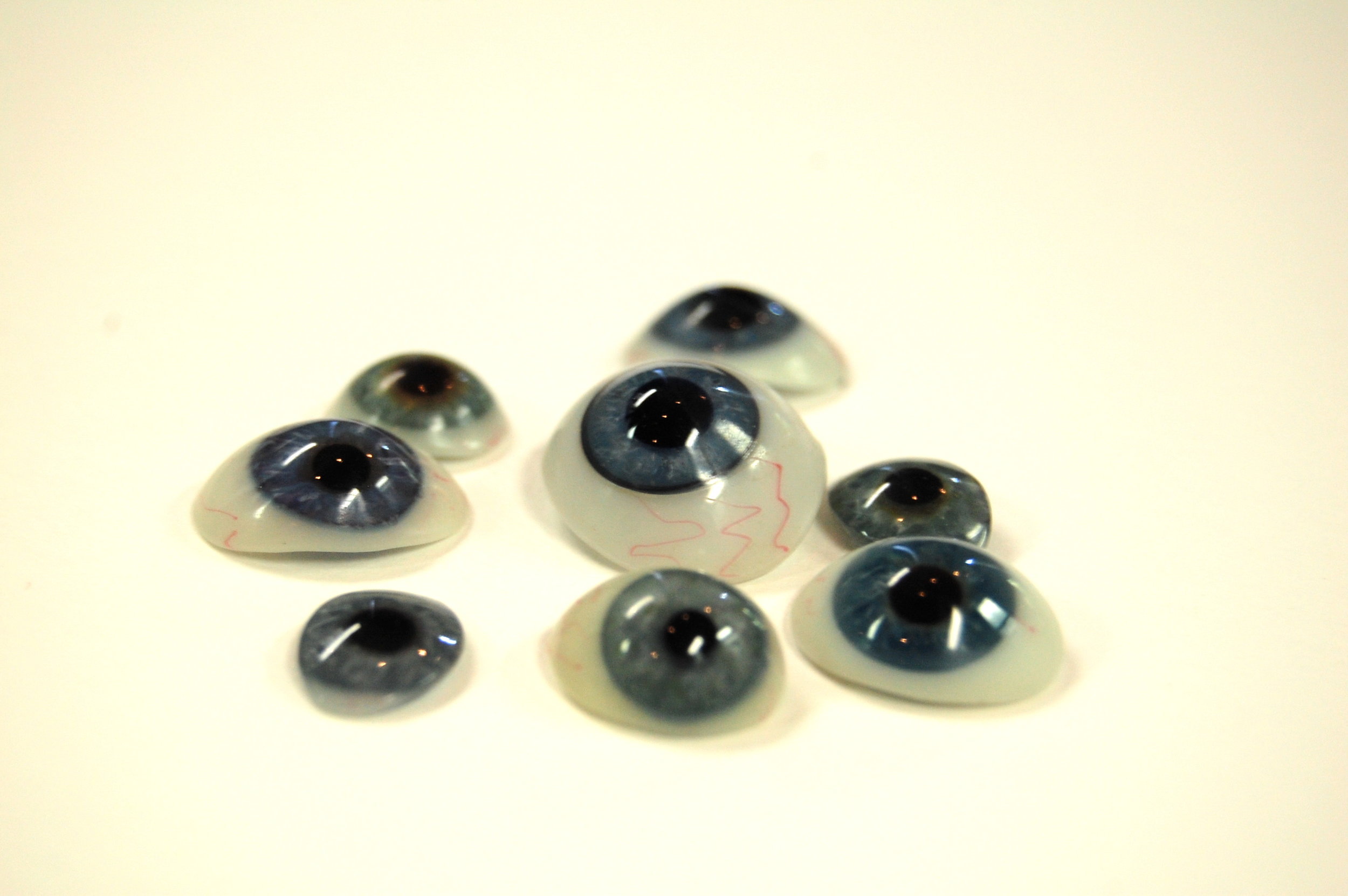
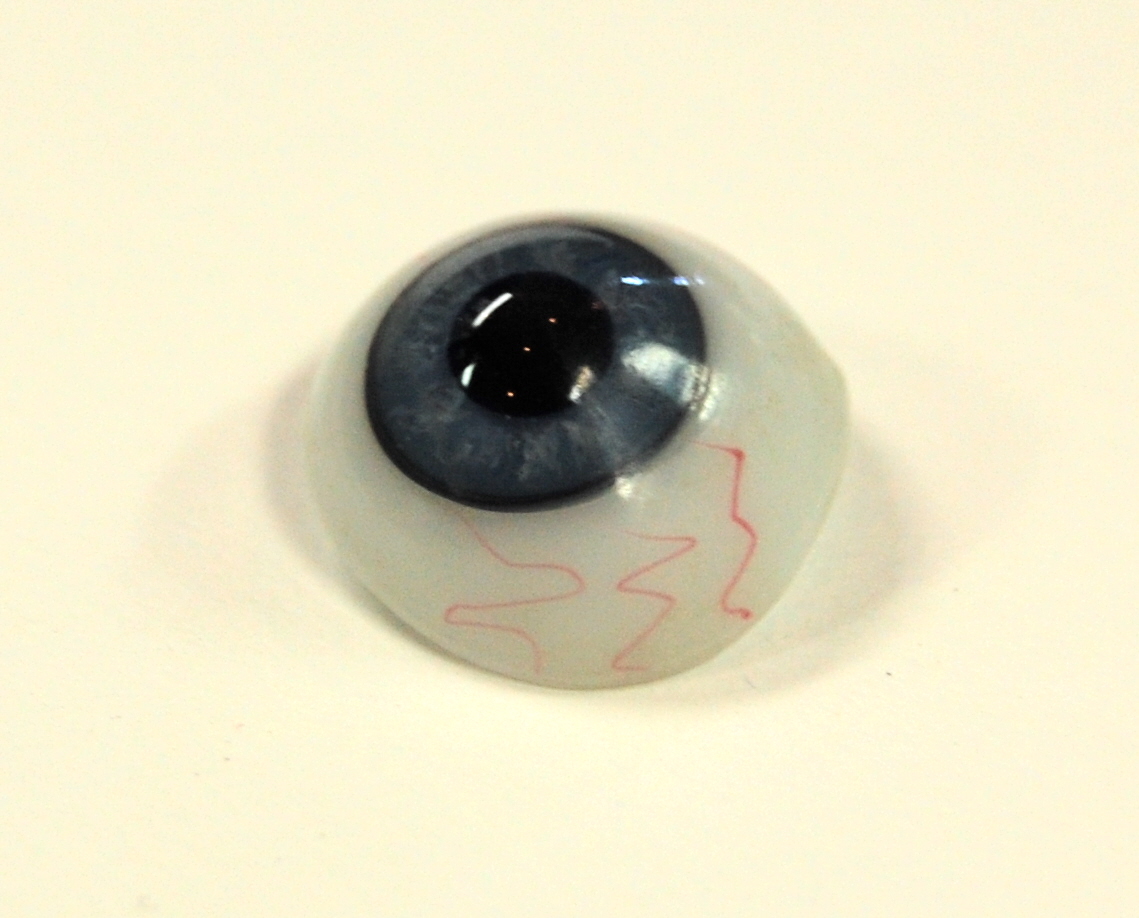
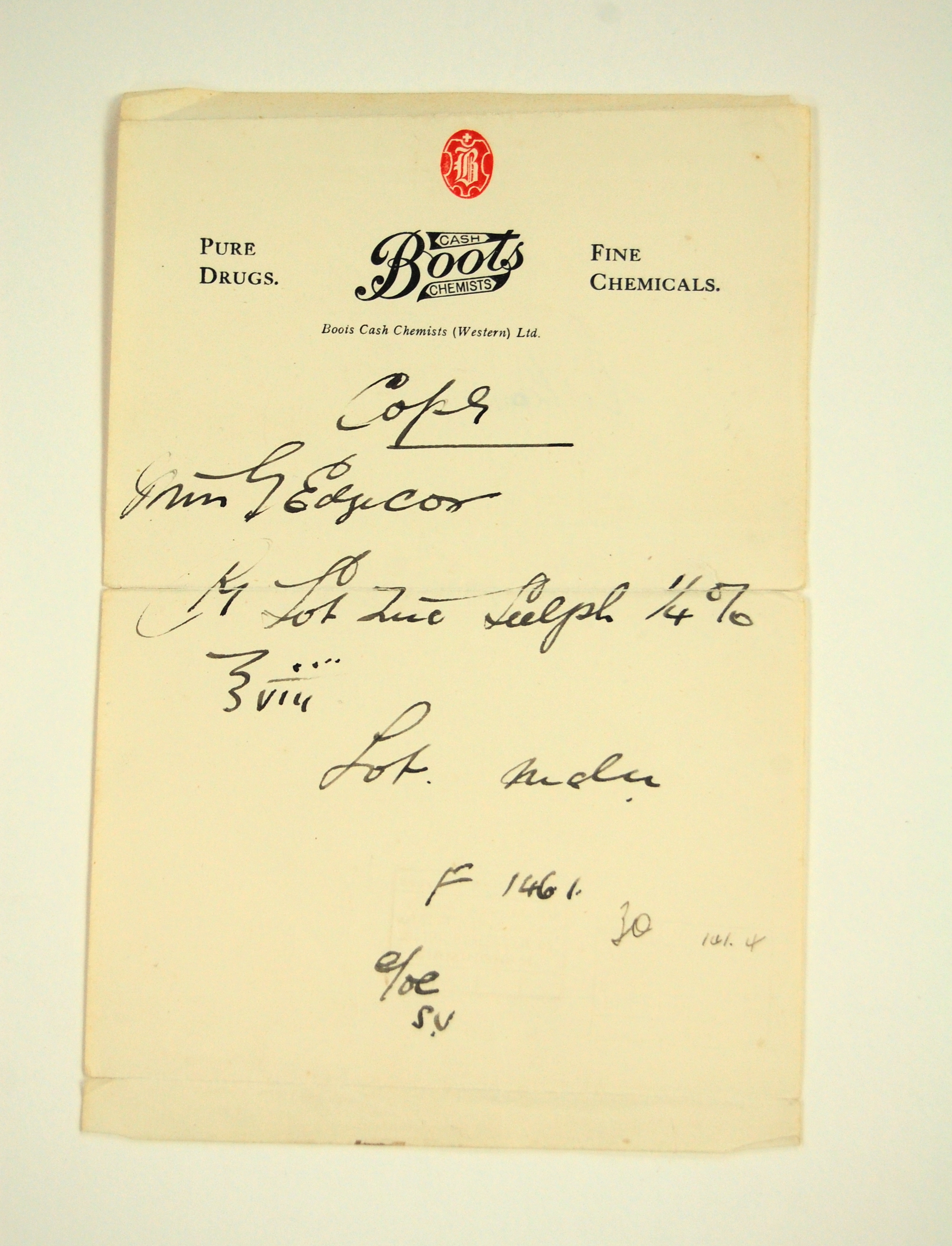
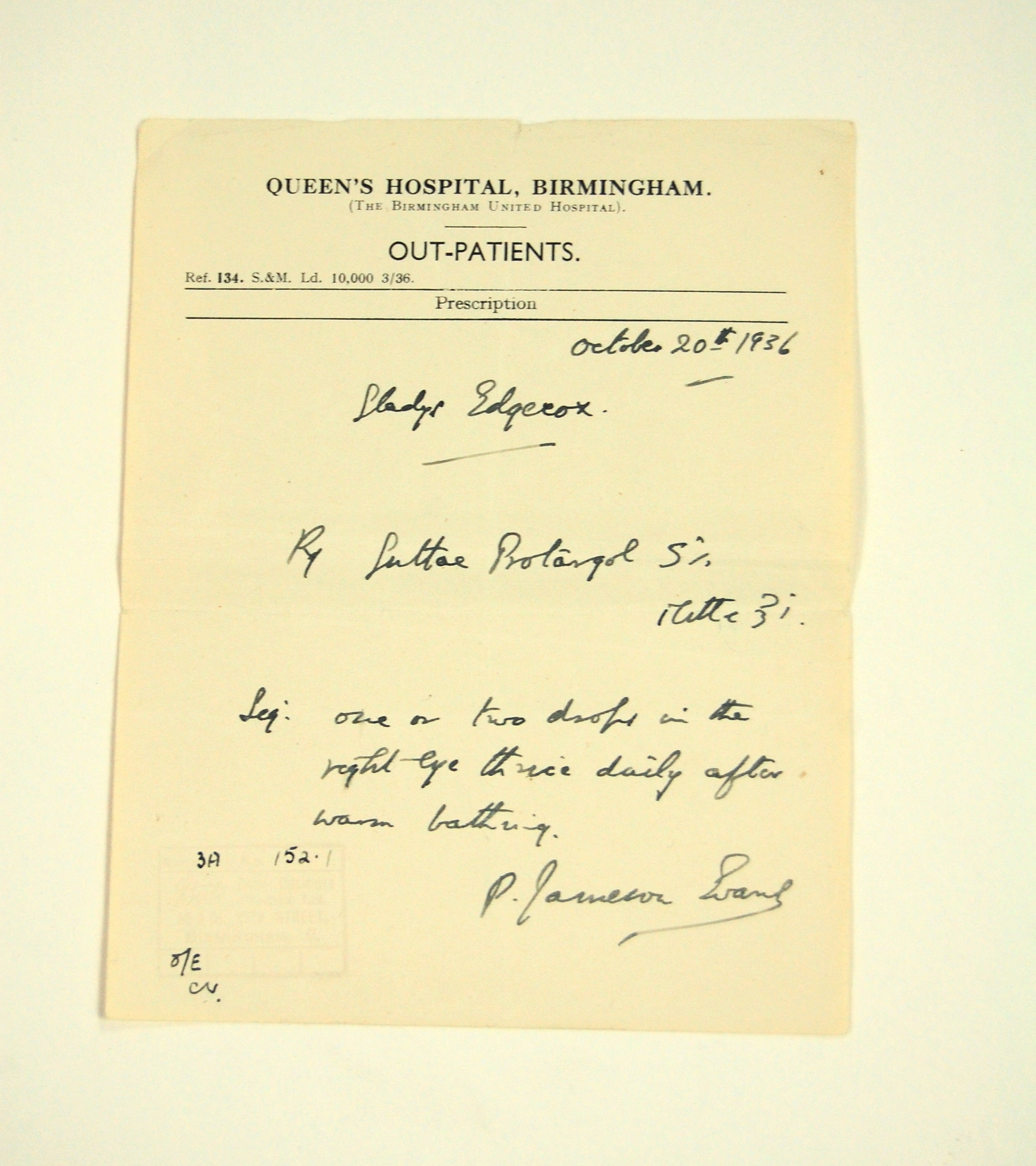
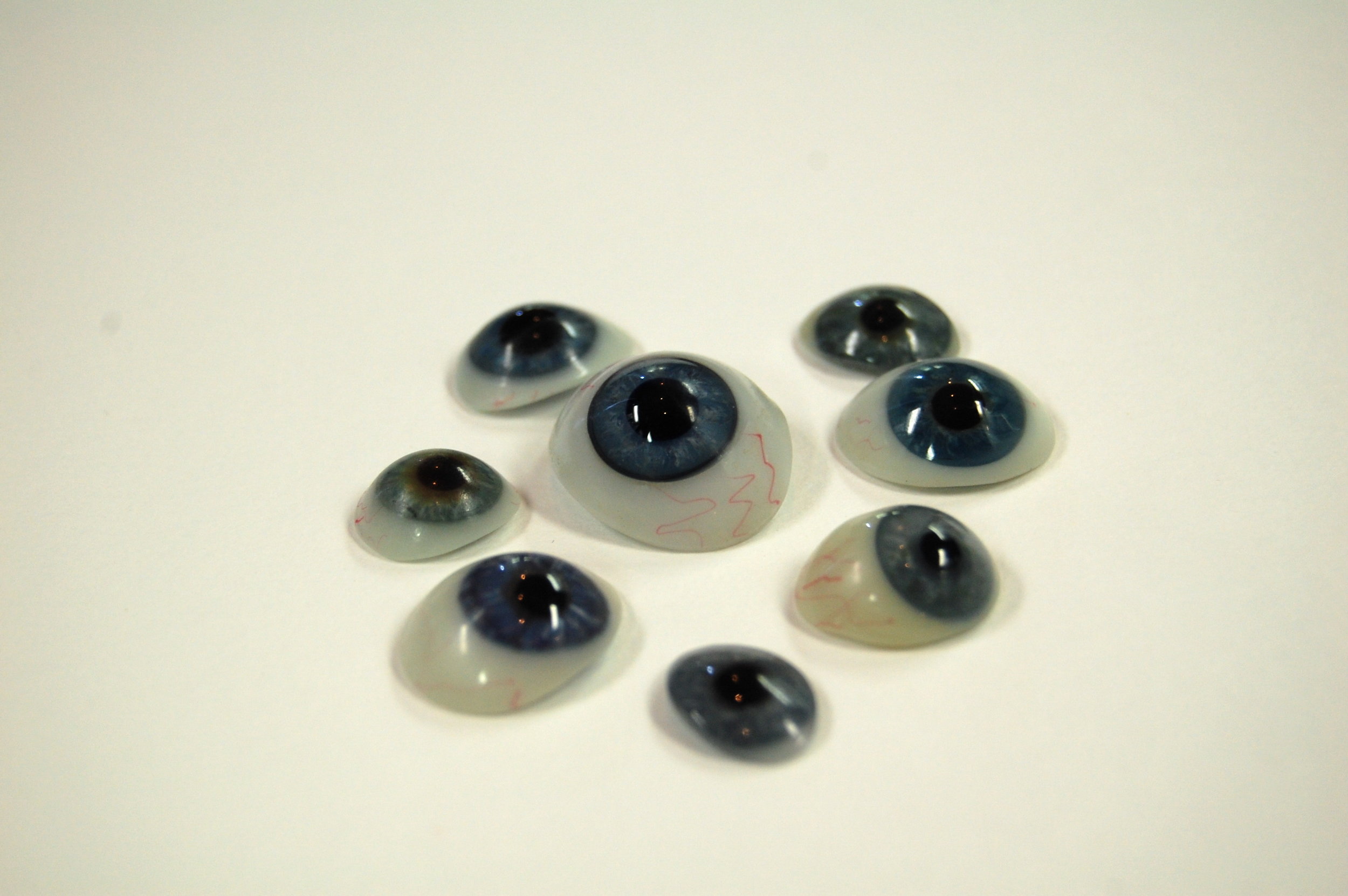
ENT refers to ear, nose and throat.
These artificial glass eyes with corresponding prescription notes from the early 1900s belonged to Mrs Gladys May Hewston (1910-1993). Following damage to her eye obtained during birth, Mrs Hewston had her damaged eye removed when she was still young, and replaced with a top quality glass eye at the Birmingham and Midland free Hospital for Children. Each of these glass eyes were hand painted to match Hewston’s existing left eye as close as possible.
In the early 1900s, patients could obtain artificial eyes from an optician, or an ocularist – a specialist in making and fitting prosthetic eyes. The better the quality the higher the price therefore, these particular hand painted glass eyes would have been relatively expensive.
Thanks to advances in anaesthetics and antisepsis during the latter half of the 19th Century, artificial eyes could be surgically inserted to completely replace existing damaged eyes, opposed to just covering them up. This resulted in a re-design of artificial eyes as they had to safely and comfortably sit in the eye socket.
These objects are on display in the Ophthalmology and ENT display case at the George Marshall Medical Museum.